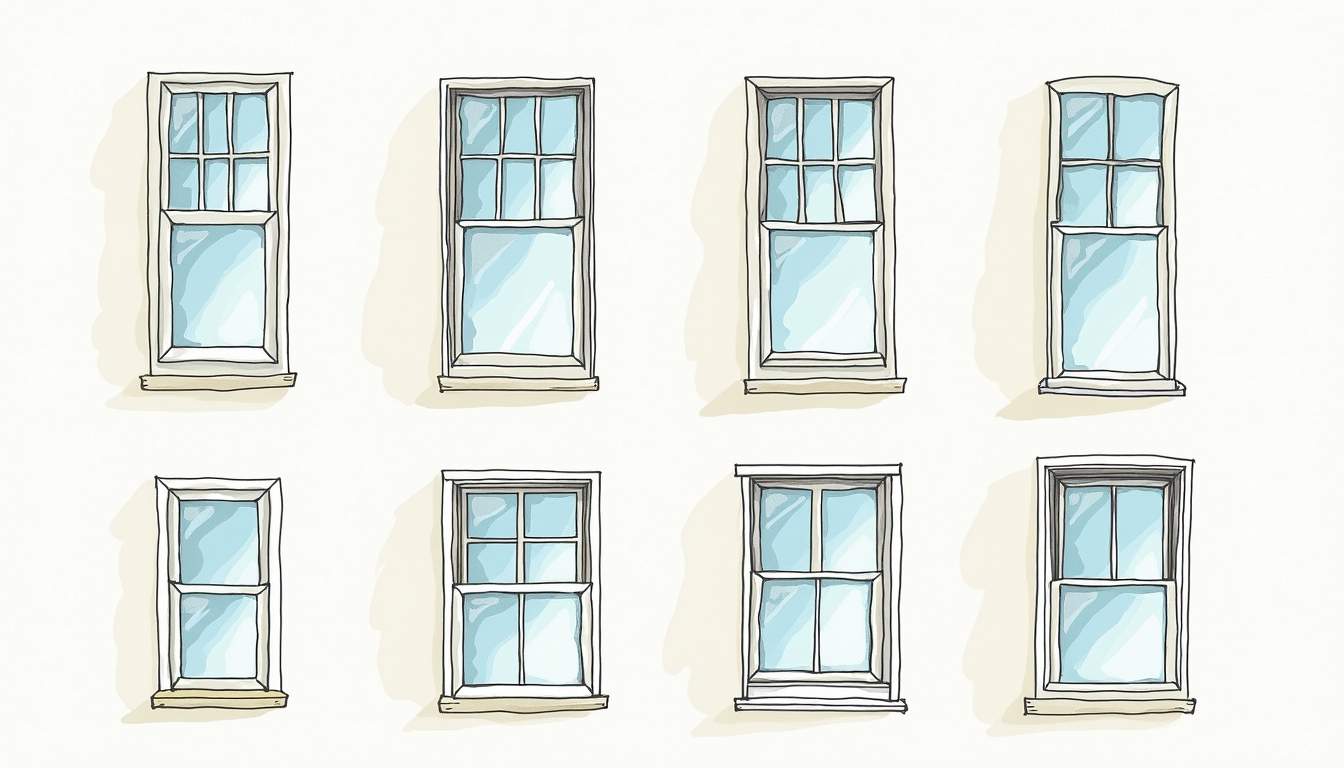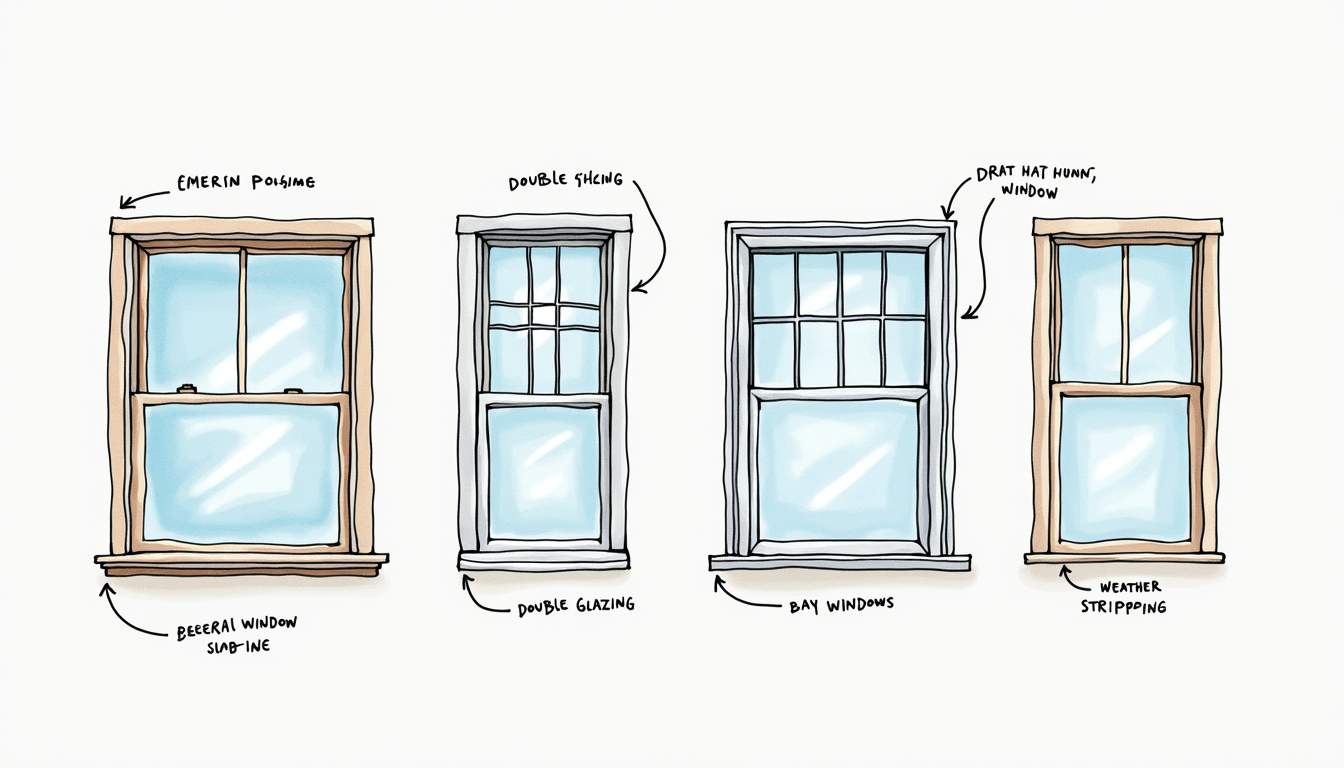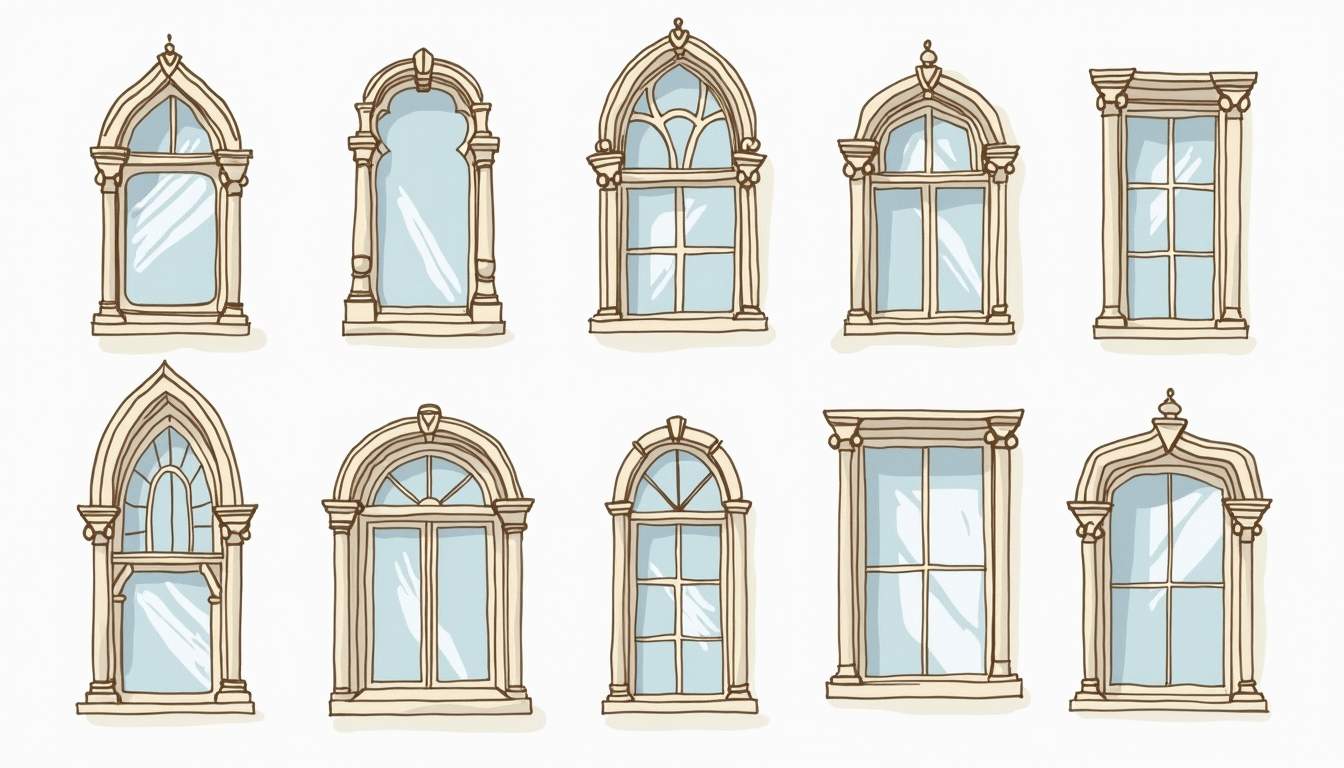
Windows are an essential component of any building, influencing not only the aesthetics but also the functionality and energy efficiency of a space. With a variety of window types available, understanding their unique benefits can help homeowners and builders make informed decisions. This article delves into the various window types, their advantages, and considerations to keep in mind when selecting the right windows for your needs.
Understanding Window Types
Before diving into the benefits of specific window types, it’s important to understand the basic categories of windows. Windows can be classified based on their operation, design, and materials. Each type offers distinct advantages that cater to different preferences and requirements.
Fixed Windows
Fixed windows are non-operable and designed primarily for providing views and natural light. They are often used in combination with operable windows to enhance ventilation while maximizing the amount of light entering a space.
One of the main benefits of fixed windows is their energy efficiency. Since they do not open, they create a tighter seal against air leaks, which can help maintain indoor temperatures and reduce heating and cooling costs. Additionally, fixed windows can be strategically placed to frame beautiful outdoor scenery, turning your home into a picturesque retreat. Their sleek design also allows for larger panes of glass, which can dramatically increase the aesthetic appeal of a room.
Double-Hung Windows
Double-hung windows feature two operable sashes that slide vertically. This design allows for versatile ventilation options, as both the top and bottom sashes can be opened independently.
These windows are particularly popular in traditional and historic homes. They offer ease of cleaning from inside the home, making maintenance simple. Additionally, double-hung windows can enhance airflow, which is beneficial in warmer climates. Their classic design complements a range of architectural styles, from colonial to contemporary. Furthermore, many modern double-hung windows come equipped with advanced locking mechanisms and energy-efficient glazing options, providing both security and insulation. For more information or professional assistance, visit Window Repair Singapore.
Sliding Windows
Sliding windows operate by moving horizontally along a track. They are ideal for spaces where a swinging window might be impractical due to space constraints.
One of the notable advantages of sliding windows is their expansive glass area, which allows for maximum natural light and unobstructed views. They are also easy to operate, making them a popular choice for modern homes. The minimalist design of sliding windows can create a seamless transition between indoor and outdoor spaces, which is particularly desirable in open-concept layouts. Additionally, many sliding windows are designed with durable materials that resist wear and tear, ensuring they remain functional and attractive for years to come. Their versatility also allows them to be used in various settings, from patios to living rooms, enhancing the overall ambiance of a home.
Energy Efficiency and Insulation
When selecting windows, energy efficiency is a critical factor to consider. Different window types offer varying levels of insulation and energy-saving features that can significantly impact heating and cooling costs. Choosing the right windows can lead to substantial savings on energy bills and create a more comfortable living environment, making it an essential aspect of home improvement projects.

Low-E Glass
Low-emissivity (Low-E) glass is a popular choice among energy-efficient windows. This type of glass is coated with a thin layer that reflects heat while allowing light to enter. It helps to keep homes cooler in the summer and warmer in the winter. This dual functionality not only enhances the aesthetic appeal of your home by maximizing natural light but also minimizes the need for artificial lighting, further reducing energy consumption.
Windows with Low-E glass can significantly reduce energy bills and enhance indoor comfort. They are particularly beneficial in regions with extreme temperatures, as they help maintain a stable indoor climate. Additionally, Low-E glass can protect your furniture and flooring from UV damage, as it blocks a significant percentage of harmful rays while still allowing sunlight to brighten your home.
Insulated Frames
The frame material also plays a crucial role in a window’s energy efficiency. Frames made from materials like vinyl or fiberglass offer better insulation compared to traditional wood or aluminum frames. These materials not only provide superior thermal performance but are also resistant to moisture, which can lead to mold and decay in wooden frames over time.
Insulated frames reduce heat transfer, helping to keep indoor temperatures stable. This not only enhances comfort but also contributes to lower energy costs over time. Moreover, investing in high-quality insulated frames can lead to improved soundproofing, making your home a quieter sanctuary from the hustle and bustle of the outside world. Homeowners should also consider the importance of proper installation, as even the most efficient windows can underperform if not fitted correctly, leading to drafts and energy loss.
Design and Aesthetic Appeal
Windows are a key design element in any home. The type of window chosen can drastically alter the appearance of a building, both inside and out. Understanding the aesthetic benefits of various window types can help homeowners create a cohesive design.

Architectural Windows
Architectural windows, such as bay or bow windows, add character and depth to a home’s exterior. These windows extend beyond the wall, creating a nook that can be used for seating or decoration.
They not only enhance the visual appeal but also allow for increased natural light and panoramic views. Incorporating architectural windows into a design can elevate the overall style of a home. Furthermore, these windows can serve as a focal point, drawing the eye and adding a unique architectural feature that can set a home apart from others in the neighborhood. The extra space created by these projections can be utilized for indoor plants, bookshelves, or even a cozy reading corner, making them functional as well as beautiful.
Casement Windows
Casement windows are hinged on one side and open outward, providing excellent ventilation. Their sleek design and large glass surface make them a popular choice for modern homes.
These windows can be customized with various finishes and colors, allowing homeowners to match them with their overall design scheme. Additionally, casement windows offer unobstructed views, enhancing the connection between indoor and outdoor spaces. The versatility of casement windows also extends to their placement; they can be installed in hard-to-reach areas, such as above kitchen sinks, where traditional windows might be less practical. This functionality, combined with their aesthetic appeal, makes casement windows an ideal choice for maximizing both light and airflow while maintaining a stylish look.
Security and Safety Features
Safety and security are paramount when it comes to windows. Different types of windows come with various features that can enhance the safety of a home.

Impact-Resistant Windows
Impact-resistant windows are designed to withstand extreme weather conditions, such as hurricanes or heavy storms. They are constructed with laminated glass that remains intact even when struck by debris.
These windows not only protect against the elements but also provide an added layer of security against break-ins. Homeowners in storm-prone areas often find these windows to be a worthwhile investment for peace of mind.
Window Locks and Security Grilles
Many window types come equipped with advanced locking mechanisms that enhance security. For instance, double-hung windows often feature locks that secure both sashes, preventing unauthorized access.
Additionally, security grilles can be installed on various window types to provide an extra barrier against intruders. These features are essential for homeowners looking to enhance their property’s security.
Maintenance and Durability
Another crucial aspect to consider when choosing windows is the maintenance required and their overall durability. Different window types and materials come with varying levels of upkeep.
Vinyl Windows
Vinyl windows are known for their durability and low maintenance requirements. Unlike wood, they do not require painting or staining, making them a convenient choice for busy homeowners.
These windows are resistant to moisture, which helps prevent issues such as rot or mold. Additionally, vinyl windows are available in various colors and styles, offering versatility without compromising on durability.
Wood Windows
Wood windows offer a classic aesthetic and can be painted or stained to match any design. However, they require more maintenance compared to other materials. Regular painting or sealing is necessary to protect against moisture and pests.
While wood windows can be more susceptible to wear and tear, their timeless appeal makes them a popular choice for many homeowners. Proper care can extend their lifespan significantly.
Cost Considerations
Budget is often a deciding factor when it comes to window selection. Different types of windows come with varying price points, influenced by materials, design, and energy efficiency features.
Budget-Friendly Options
For those on a tight budget, vinyl and aluminum windows are often the most affordable options. They provide decent energy efficiency and require minimal maintenance, making them a practical choice for many homeowners.
While they may not offer the same aesthetic appeal as wood, advancements in manufacturing have led to a variety of styles and finishes that can complement various home designs.
Long-Term Investment
While some window types may have a higher upfront cost, they can provide significant savings over time through energy efficiency and durability. For example, investing in high-quality, energy-efficient windows can lead to lower energy bills and reduced maintenance costs.
Homeowners should consider the long-term benefits and potential return on investment when selecting windows, as they can significantly impact property value and comfort.
Conclusion
Understanding the benefits of different window types is crucial for making informed decisions that enhance both the functionality and aesthetics of a home. From energy efficiency and security features to design appeal and maintenance needs, each window type offers unique advantages.
By carefully considering individual preferences, budget constraints, and the specific requirements of a home, homeowners can select windows that not only elevate their living spaces but also contribute to long-term comfort and savings. Ultimately, the right windows can transform a house into a welcoming and efficient home.